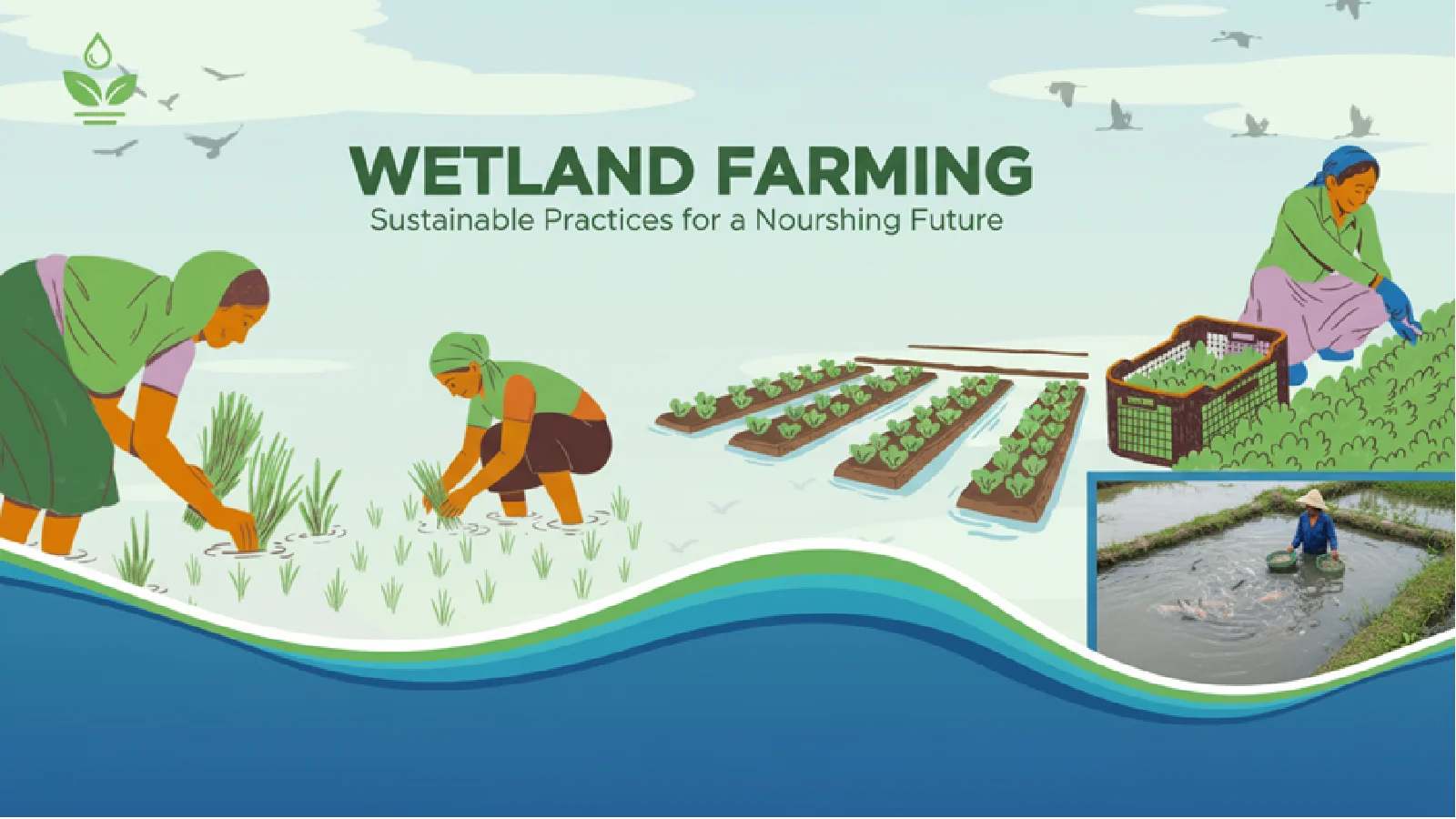Wetland farming has gained attention as a sustainable agricultural practice that balances food production with environmental conservation. These are often seen as wastelands that are swampy, waterlogged areas with very little use, but in reality these are the most productive ecosystems on Earth.
What is Wetland Farming?
Wetland farming refers to the cultivation of crops and raising of aquatic species in water-saturated or seasonally flooded areas. Now these lands are rich in organic matter and nutrients, which makes them naturally fertile. The main goal of wetland farming is to use the hydrological conditions of wetlands for sustainable agricultural production without any degradation of the ecosystem.
There are farmers who often combine aquaculture and agriculture, i.e., fish and rice; now this can create an integrated system that optimizes both land and water use.
Wetland Farming in India
India being a vast hub for wetlands, they cover nearly 4.63% of the total land area. Some of the major wetlands are Chilika Lake in Odisha, Vembanad Lake in Kerala, and Loktak Lake in Manipur. These ecosystems not only support the rich biodiversity but also serve as a livelihood for millions.
Benefits of Wetland Farming
This type of farming offers both economic and environmental advantages. Let us see why it is becoming so important in this era of climate change and sustainable agriculture:
- Natural Fertility and High Yield: These lands are rich in nutrients due to the constant deposition of organic matter. It reduces the need for chemical fertilizers and enhances the soil productivity, which often results in higher yields, that too with lower input costs.
- Water Conservation: These act like natural sponges; they store the excess rainfall and then slowly release it during dry periods. Farming in such areas results in efficient water use, especially through integrated rice-fish systems.
- Biodiversity Support: Wetland farms sustain life forms like fish, amphibians, aquatic plants, and birds. By maintaining these ecosystems, farmers contribute to the biodiversity conservation while gaining from multiple income sources.
- Climate Change Mitigation: These lands capture a big amount of carbon dioxide in their peat and plant biomass. The sustainable wetland farming helps reduce the greenhouse gas emissions and protects the natural carbon sinks.
- Livelihood Opportunities: There are many rural communities that are located in flood-prone areas; wetlands provide year-round employment through farming, fishing, and ecotourism. This eventually creates an economic resilience and supports the local food systems.
Also read: What Is Polyhouse Farming & Its Benefits?
Challenges in Wetland Farming
There are many benefits of wetland farming, but along with these benefits, there are many challenges as well that are in need of urgent attention:
- Land Use Conflicts: As the rapid urbanization and industrial expansion are converting wetlands into construction or waste disposal sites, this is resulting in habitat loss and reduced farming potential.
- Water Pollution: The contaminated water that comes from a nearby runoff from an agricultural field or some sewage discharge greatly affects the crop quality, fish health, and soil fertility.
- Lack of Awareness and Policy Support: There are many farmers who lack the essential knowledge of the sustainable wetland management practice. There are many policies as well that often prioritize the conventional agriculture, which leaves the wetland farmers with very limited institutional support and financial incentives.
- Seasonal Flooding and Salinity: The intrusion of excess flooding or saline water can damage the crops and disrupt the farming schedules, which makes the wetland farming risky without proper management.
- Biodiversity vs. Productivity Conflict: The balancing of the needs of wildlife conservation with agricultural productivity remains a big challenge. Overexploitation of wetland resources can lead to long-term degradation if not carefully managed.

